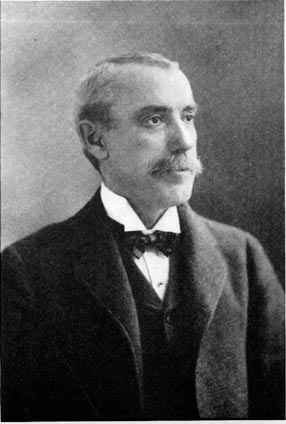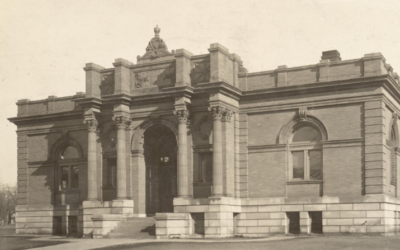Nebraska in the early 1890s suffered from protracted drought, and farm prices fell to new lows. Conditions were so unfavorable that immigration, which had more than doubled the state’s population in the 1880s, almost ceased. Nebraska’s population only increased by seven thousand persons between 1890 and 1900. Some became so discouraged that they sold or gave up their property and left the state.
Charles H. Morrill, a prominent farmer, businessman, and banker for whom Morrill County was named, both witnessed and experienced these conditions in Nebraska. In his autobiographical The Morrills and Reminiscences, published in 1918, he recalled:
“In the year 1893 crops in Nebraska were almost totally destroyed by drought and hot winds. Then came the panic and financial stress, which paralyzed business. In 1894 Nebraska was doomed to have another crop failure. Farmers were obliged to ship in grain and even hay to feed their stock; many sacrificed their live stock by selling at very low prices. Some farmers shot their stock hogs to prevent their starving. Financial conditions grew worse and the entire state was almost in the grip of actual famine.
“Values were greatly reduced, merchants and banks failed. In Lincoln all banks with the exception of three went out of business or failed. Farmers could not pay interest on their mortgages; land could not be sold at any price; foreclosure of mortgages was the general order. . . . In the central and western sections of the state the price of land fell to almost nothing. In Custer County, a very large acreage went into the ownership of eastern real estate and loan companies. These lands were mortgaged for five hundred to seven hundred dollars on each one hundred and sixty acres. One eastern loan company offered to sell me forty quarter sections at two hundred dollars each.
“The crop for 1895 was almost a failure. The result was that all confidence in Nebraska real estate was gone. . . . Good farm lands in Polk and other eastern counties sold as low as twenty-five hundred dollars for one hundred and sixty acres. Many of these farms had improvements thereon valued at fifteen hundred to two thousand dollars. No one desired to purchase while almost everyone wished to sell.”
Urban areas didn’t escape the effects of the drought and depression. Figaro, an Omaha weekly, on December 2, 1893, noted that at the time of the recent Thanksgiving holiday, there were “two thousand people in Omaha homeless and absolutely without means of support.” The newspaper urged its readers to “give at least one of these unfortunates a place to sleep and enough to eat to sustain life without actual misery.”
The financial depression reached its summit in the period 1894-96 but continued into the year 1897. By 1898 there were signs that better times were returning. Those who managed to hold on during the hard times were rewarded by returning prosperity in the early years of the twentieth century.

Charles Henry Morrill. From The Morrills and Reminiscences (1918).



